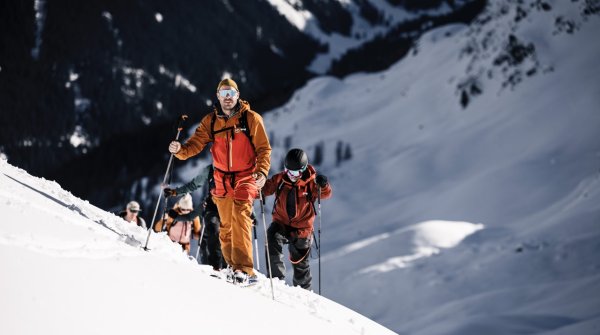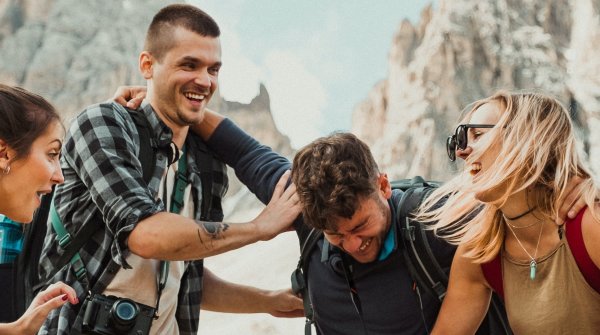
However, many beginners who are just learning to ski have problems with transport at first. What types of ski lifts there are, how they work and what to look out for - our tips.
T-bar lift, chair lift: these lift types are available
First things first: What types of lifts are there? Ski lifts are divided into drag lifts and chair lifts. In addition, the active can go up the mountains with cabin lifts. In contrast to the ski lift, skis and snowboards are then unstrapped and taken into the gondolas.
In the chairlift the skier or snowboarder is transported sitting down, in modern lifts even with seat heating. The feet with the skis or snowboard dangle in the air.
The skier can be pulled upright by the T-bar lift, skis or board glide over the snow. T-bar lifts are available with a towing bar as a so-called plate lift for one person and as an anchor lift with a double bar for up to two people.
Even lift novices need not worry about a T-bar lift: If a fall actually occurs, the drop height is low. And if you make the typical beginner's mistake of missing the bar, all you have to do is stay calm, wait and try again.
In Austria alone, the lifts transport their sporty clientele more than 600 million per season to the starting point of the well-prepared downhill runs. Once the first time is over, this type of transport quickly becomes the beloved norm.
Ski lift with children
Children on a ski lift generally get on well with the ski lift, as ski novices even often better than adults. As with skiing, they know no inhibitions, at least as long as there are no negative experiences.
However, especially on the chairlift, the youngest ones are dependent on help, as their height under 1.20 meters is not yet sufficient to be pushed into the approaching seat. Adult companions should then lift the children to the appropriate height in the seat before they get in themselves.
With the T-bar lift, it's all about the right coordination, especially during the first approach. If there is a choice between a single or double lift (platter or anchor lift) in the ski area, the two-person version should be preferred at the beginning. This gives you security.

Tips: Use the T-bar safely
- for disc lifts line up individually, for double bars line up in pairs
- Snowboarders release their boots from the rear binding, skiers take both ski poles in one hand, in the case of double bars in the outer hand.
- step into the lift line in the direction of travel at the entry point without leaving the lane, approach from the left and right in the case of double hangers
- Turn your head backwards and watch the approaching lift or turn towards the boarding assistant, let him give you the bar in his free hand and take it over quickly.
- If no boarding assistant is available, take hold of the handle yourself and do not let go.
- If the bar is firmly in your hand, lean the back of both thighs below the bottom against the bar and allow yourself to be pulled into snowboarding T-bar.
- if possible, only sit lightly on the bar
- snowboarders place their free foot on the board between the bindings
- stand upright, keep your balance (one hand on the bar for stability)
- do not lean against each other or bend outwards when using double bars
- ride in the track of the lift line (no slalom), keep legs side by side, be careful in curves and when starting jerkily
- drive to the station, do not get off prematurely
- Prepare to get off in good time, remove any clothing that may have become caught from the towing bar
- Get off on the prescribed side, release the towing bar in the direction of travel.
- Leave the exit area quickly to make room for the next passengers.
- In the event of a fall, clear the lift path as quickly as possible and move to the side, paying attention to other users of the slope.
Safety instructions for the use of the chairlift
With the chairlift, inexperienced skiers usually face greater difficulties on the slopes than with the T-bar lift, as skis and ski poles or the snowboard also have to be coordinated. The equipment floats in the air in the chairlift and must be transported in such a way that it can neither be lost nor injure fellow passengers.
Tips for chairlift beginners
- Depending on the number of seats, line up next to each other and proceed (with the conveyor belt) to the boarding point.
- Skiers take the ski poles in one hand.
- Snowboarders release the boot from the rear binding.
- Look over your shoulder to watch the approaching lift. Upon arrival, sit down quickly.
- Safety bar closes automatically or is lowered carefully over the heads of all passengers.
- Once the safety bar is engaged, the feet with the skis or snowboard can be placed on it.
- Place legs side by side so that skis do not get caught. Keep ski poles straight.
- Do not rock!
- Ski to the station, do not get off before. There is a risk of injury when jumping from a great height.
- When entering the station, lift the tip of the skis and snowboard to compensate for the incline. Do not let ski poles drag.
- Pay attention to light signals. Red changes to green if the bars open automatically or may be opened manually.
- After opening the bar, stand up quickly and leave the exit area immediately in the prescribed direction.
- In the event of an emergency stop on the track, remain calm and follow the instructions of the lift personnel.
 Sports BusinessBetween powder and principles: Ski tours with added value
Sports BusinessBetween powder and principles: Ski tours with added value SportsTechStatus quo: Snowboard step-in bindings
SportsTechStatus quo: Snowboard step-in bindings
- Awards
- Mountain sports
- Bike
- Fitness
- Health
- ISPO Munich
- Running
- Brands
- Sustainability
- Olympia
- OutDoor
- Promotion
- Sports Business
- Textrends
- Triathlon
- Water sports
- Winter sports
- eSports
- SportsTech
- OutDoor by ISPO
- Heroes
- Transformation
- Sport Fashion
- Urban Culture
- Challenges of a CEO
- Trade fairs
- Sports
- Find the Balance
- Product reviews
- Newsletter Exclusive Area
- Magazine





